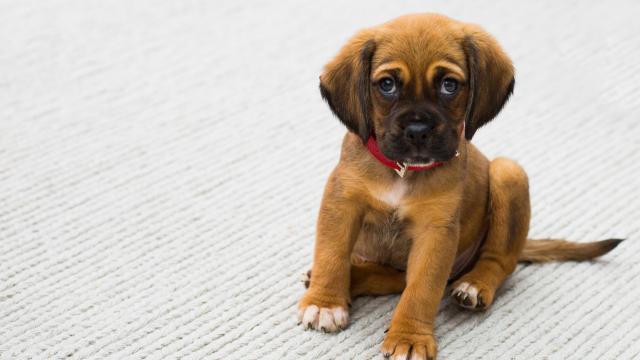You’ve probably heard the term “cute aggression” thrown around over the years. It describes the odd but seemingly common compulsion to smoosh, bite, or pinch — but not hurt — adorable things like babies and animals.
Researchers have for years been looking into why some people report feeling this way. Katherine Stavropoulos is an assistant professor of special education at the University of California, Riverside and the co-author of a new study on cute aggression.
She told Gizmodo by phone she became interested in the phenomenon after her friend sent her an article about it citing Yale University research.
While previous research focused on the behavioural side of cute aggression, Stavropoulos’ research aimed to show that there was a neural element involved as well. She hypothesised that either the reward or emotion systems were involved, and her research seems to show it’s both.
“This relationship between brain activity and cute aggression seems to be influenced by how overwhelmed you feel,” Stavropoulos told Gizmodo. “So if you feel overwhelmed [when looking at cute things], you’re more likely to have this relationship between brain activity and cute aggression.”
For the study, published this week in the journal Frontiers in Behavioural Neuroscience, Stavropoulos examined cute aggression using EEG caps, which use electrodes to pick up electrical activity on the top of the scalp.
45 people between the ages of 18 and 40 participated in the study, and all of them were shown four blocks of 32 images: “more cute” animals (or smol baby animals), “less cute” animals (which here meant adult animals), and two types of images of human babies.
The baby images they used were actually visual stimuli borrowed from fellow researchers, with both sets having been photo manipulated for especially cute facial features. In the first set, the features that make babies appear cute were more pronounced.
Stavropoulos said this included bigger cheeks, smaller noses, and big eyes. In the other set of baby pictures — the same photos of the same children, mind you, just manipulated — the images were tweaked to have thinner cheeks, smaller eyes, and so on.
Participants were shown the pictures in a different order and watched each kind of picture for about three minutes before they were asked to fill out behavioural questionnaires. Answers that indicated cute aggression included “Saying ‘I want to eat you up!’ through gritted teeth,” and “I want to squeeze something!”
One thing Stavropoulos pointed out, though, was that the research didn’t attempt to compare babies and animals to each other; instead, it looked at responses to the “more cute” and “less cute” condition for babies and animals respectively.
“What’s interesting is we saw really strong effects for the animals, so baby animals versus adult animals,” Stavropoulos told Gizmodo. “We definitely saw differences in brain and behaviour, such that people reported more cute aggression for the more cute animals versus less cute animals.”
For babies, however, Stavropoulos said she and her study co-author, UCR doctoral student Laura Alba, didn’t find the effects they expected. But they think that has to do with differences in methods.
“Both babies [shown to participants] were objectively pretty cute, is the problem,” she said. “Adult animals and baby animals are strikingly different. But these pictures of babies were in fact so well photographically manipulated that they are both pretty cute looking.”
Stavropoulos said something she’d like to research in the future is specific scenarios that might be correlated with cute aggression, such as whether being a parent can influence this reaction in people to babies, or whether someone who has a dog might experience cute aggression towards household pets.
To be sure, Stavropoulos said, this isn’t a universal phenomenon. And those who don’t experience cute aggression may be scratching their heads at the notion of wanting to “bite” a child. (It’s not really like that!)
“Since I started doing this study about a year ago, I’ve been asking people at social gatherings, ‘Do you know what this is? Do you feel this way?’” Stavropoulos said. “What’s weird is the other 25 to 30 per cent look at you like you have no idea what you’re talking about. Like, ‘What do you mean you want to punch a cute animal? That’s mean!’”
If do you feel the overwhelming urge to squish something you find especially adorable, you’re in good company. Stavropoulos said the other 70 to 75 per cent of people she talks to totally get it.
